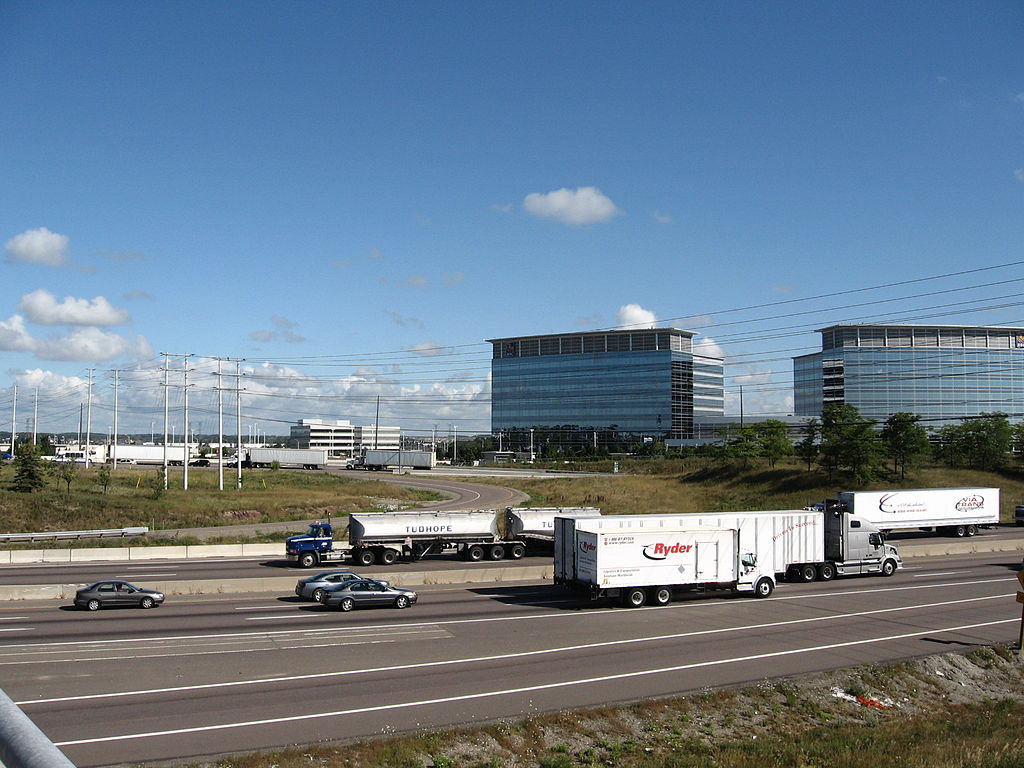Once you get a grasp of the many bills that trucking companies must cover, you may wonder how anyone can afford any goods that required transport. Fortunately, transit companies can spread their enormous costs across a large volume of freight. Big rigs can haul between 42,000 to 48,000 pounds depending on trailer and cargo types. To arrive at a price, trucking companies calculate their costs per mile to transport different cargoes.
What Goes Into The Cost-Per-Mile Rate?
The list of operating expenses is long, and starts with fuel. Diesel prices have been rising and stand well over $5 per gallon in the United States at the end of 2022. Higher fuel prices definitely challenge the industry that has no choice but to pass along the cost to consumers to remain profitable.
With expensive fuel likely to be a fact of life, innovators have been promoting electric vehicles to the transit industry. Electric vehicles would reduce pollution, but switching out a fleet of diesel-consuming vehicles for electric ones would be a large capital expense. Companies would have to invest heavily into an electrified fleet to enjoy any theoretical savings on petroleum fuels. On top of this, society as a whole would have to support the trucking industry by improving the battery charging infrastructure on the highways.
In addition to the obvious cost of fuel, trucking companies must purchase or lease trucks and trailers. New commercial trucks cost roughly $80,000 to $150,000 each. Savings are available in the used market, but spending tens of thousands of dollars on each truck remains necessary.
Other day-to-day expenses for trucking fleets:
- Insurance – Trucking companies must buy large commercial policies because big rigs can cause significant damage in a crash.
- Tolls for roads and scales – Some freeways charge tolls, and trucks often must pay fees to get weighed to confirm compliance with load limits.
- Maintenance – Commercial trucks put in many miles, and the vehicles require ongoing mechanical maintenance.
- Third-party laborers – The people who load or unload trucks must be paid.
- Brokerage fees – Many companies get business from brokers who take a cut of the money paid for shipping.
- All of these expenses add up quickly, but companies still need to pay for labor.
Trucking Industry Labor Costs
Truck drivers put in long, demanding hours behind the wheel. Some are away from home for days and require lodging. The money paid by carriers to these drivers falls into two categories: W-2 employees and independent contractors or owner operators.
W-2 employees work directly for the company. They receive salaries. Long-haul truckers who put in the longest hours and most time away from home earn between $30,500 and $96,500.
As employees, their salaries do not reflect the full cost paid by the employer. On top of the checks cashed by drivers, the company pays for workers’ compensation insurance, half of Social Security and Medicare taxes, and sometimes health benefits.
Owner operators who work as independent contractors are not employees. The trucking company does not pay for any insurance, taxes, or benefits for these people. They receive a lump sum for each job performed. A full-time owner operator might bring in over $220,000 in a year, but they are not making big money. The expenses of running the truck are shifted into the hands of the owner operator, who will be paying for things like the truck payment, insurance, and maintenance. In the end, they make on average $80,000.
A smaller portion of labor costs in the trucking industry goes toward administrative tasks. These may be performed by employees or outsourced to contractors. They take care of work related to accounting, logistics, and job acquisition.


